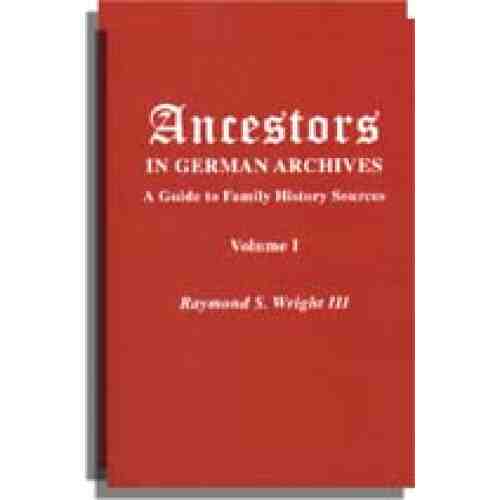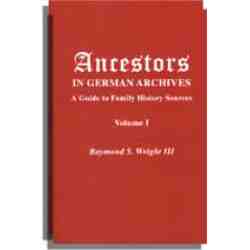Description
When they came to America, German immigrants left behind a trail of records familiar to everyone in genealogy, from births, marriages, and deaths to citizenship and census records, and from land and tax records to emigration records. The key to German genealogical research, of course, is to find out where these records are located, but since there are more than 2,000 national, state, and local repositories in Germany, to say nothing of church repositories and other private archives, such an undertaking is daunting if not downright impossible. We know there are records, but what good are they if we can’t find them? And these records stretch back to the Middle Ages, encompassing family history sources so vast in number and so scattered that the mind reels.
To overcome this challenge, a Brigham Young University project was launched in 1996 to identify the records of German emigrants by cataloguing the relevant record holdings in all the public and private archives in the Federal Republic of Germany. This book is the direct outgrowth of that ambitious project. Under the supervision of Professor Raymond Wright, approximately 2,000 national, state and local government archives, as well as private archives, were surveyed. Questionnaires were mailed to archivists asking them to identify their archives’ jurisdictions and to describe the records housed in their archives and the services provided by their staff. The returned questionnaires, supplemented by Internet searches, were used to create summaries of each archive’s jurisdictions, holdings, and services. The result of this massive survey, published here, is an exhaustive guide to family history sources in German archives at every level of jurisdiction, public and private. Anyone searching for data about people who lived in Germany in the past need only determine which archives today have jurisdiction over the records that were created by church or state institutions.
The questionnaire sent to German archivists asked specifically for information about each archive’s collections of vital records, religious records, military records, emigration records, passport records, censuses, and town and county records. Archivists were also asked to describe any published guides or inventories to their collections. Compiled in book form, the answers appear here in chapters dealing with the federal archives (Bundesarchive), religious archives, and the various archives in each of Germany’s sixteen states (Lander), including town (Kreisstadte), city (Stadtarchiv), and county archives (Kreis).
To facilitate the location of records in each archive or repository, the book is arranged in the following manner: Within each state chapter all entries are arranged in alphabetical order by the name of the city in which the archive is located. The first part of each chapter contains listings of state archives; next, all city and regional archives are listed. Church archives with jurisdictions within the state are in the third section, while the fourth section lists family archives. Last, all other archives in the state for which a questionnaire was returned, or a website found, are listed.
For each of the 2,000 archives, information is provided under the following headings:
- Name and Address of the Archive (including phone, fax, e-mail, and Internet)
- Jurisdiction of the Archive
- Organization of the Archive’s Records
- Published Guides or Descriptions of Collections
- Emigration Records
- Records of Churches or Religious Communities
- Civil Registration of Births, Marriages, and Deaths
- Civil Registration of Residents
- Records of Cities, Towns, and Districts
- Censuses
- Military Records
- Records from Former German Communities Now in Other Countries
Designed to answer the researcher’s most frequently asked questions regarding the type of records that exist and where such records can be found, this massive compilation holds the key to genealogical research in Germany. Comparisons abound, but Ancestors in German Archives closely resembles Ancestry’s Red Book in that it is an all-in-one directory to genealogical sources in all repositories in all places in one country. In this case, of course, it is a one-stop guide to genealogical sources in Germany, and it is clearly the most indispensable finding-aid ever published on the subject. Most importantly, it answers the fundamental questions about the very existence of genealogical records in Germany and paves the way for successful research.







Reviews
There are no reviews yet.